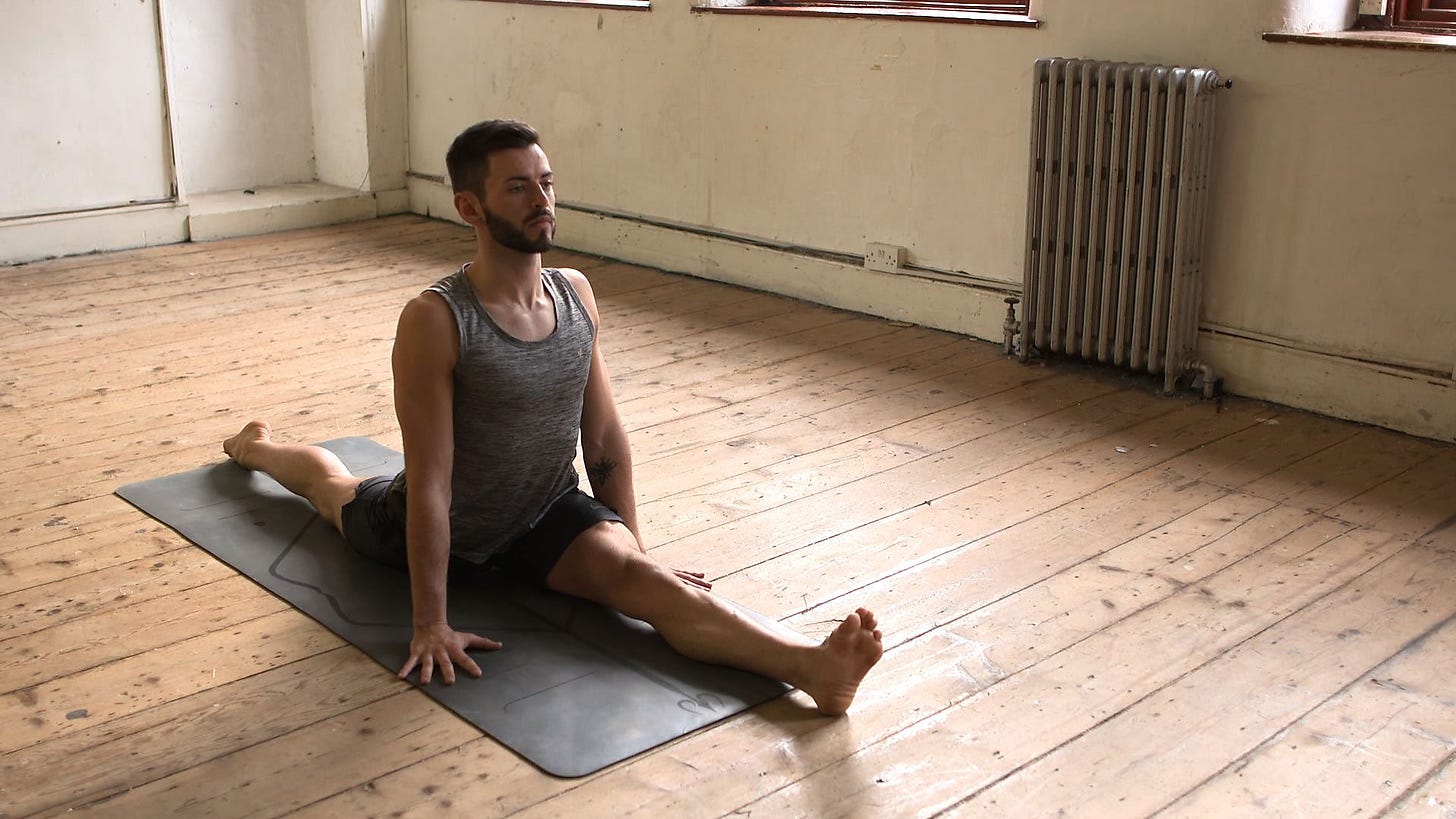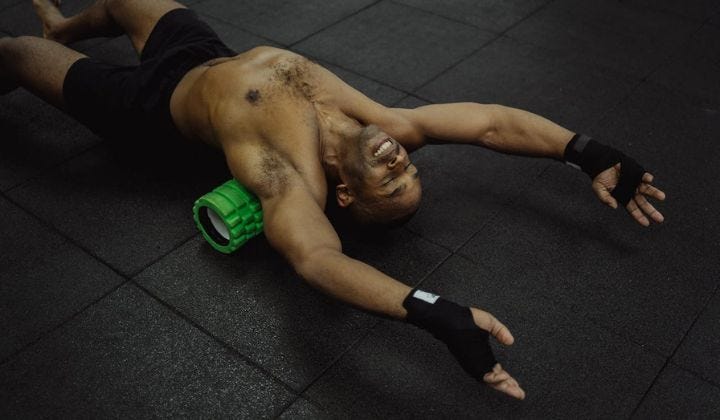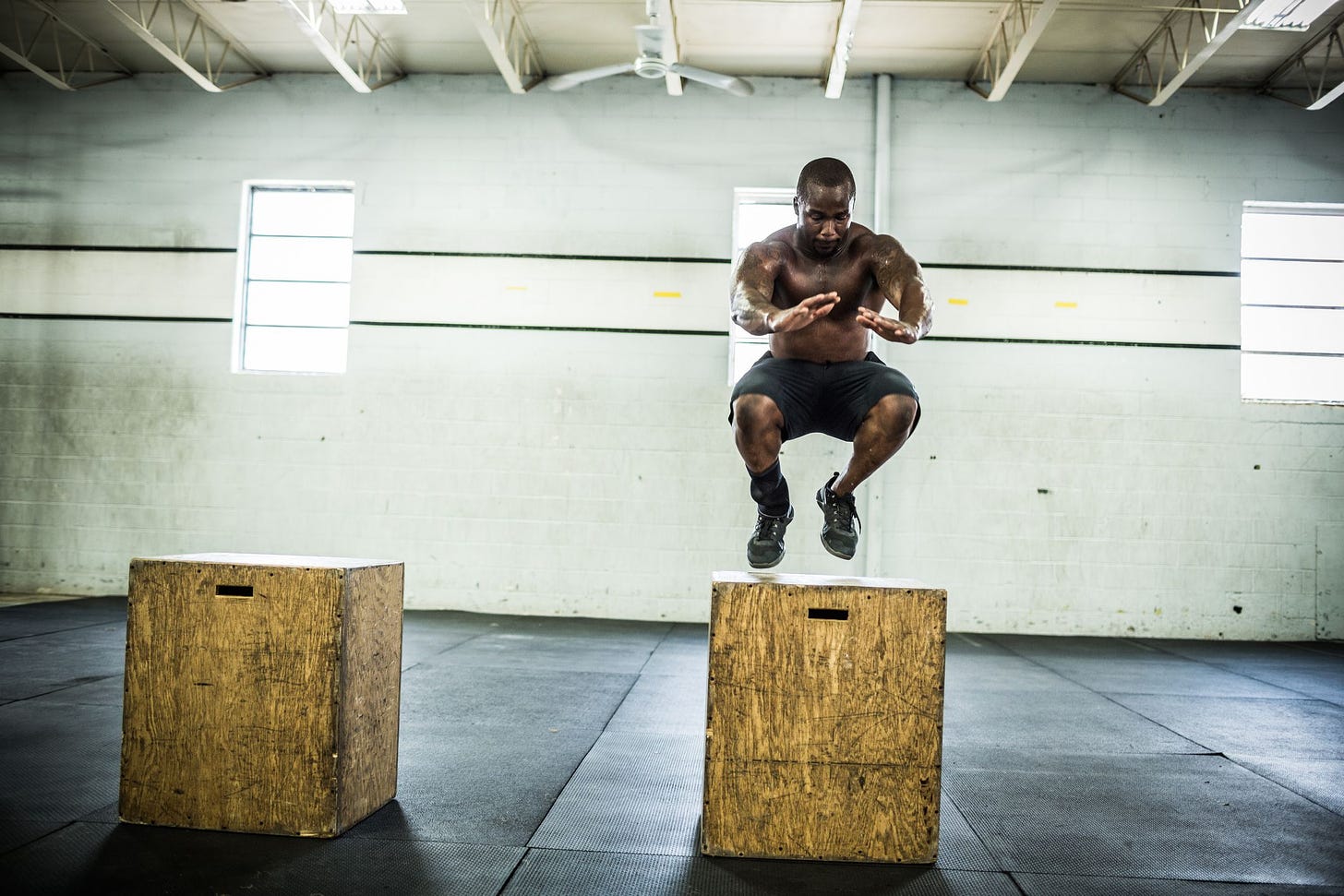How to Warmup For Lifting #87
Basic warmup principles to get your body toasty before your next session
How should I warm up before lifting?
A proper warmup is often overlooked in most programs. Crossfit and guys like Kelly Starrett popularized body tempering, foam rolling, and lacrosse balls as a standard for warm up routines. This eventually led the pendulum to swing and people began performing a 30-minute warmup before even picking up a barbell. Not warming up properly is just as bad as overdoing it. As with most things, the truth is in the middle when it comes to warm ups.
Components of a Good Warmup
Fundamentally, each warm up should raise core temperature, improve mobility, and prepare the nervous system for the training session. The warmup is an opportunity to shore up weaknesses and emphasize supporting muscle groups you’re about to train. For example, prior to benching I’ll always do plenty of banded rows, pull aparts, or face pulls. This allows my upper back to stay tight through my bench sets and provides extra volume for neglected muscles surrounding the scapula, rotator cuff, and rear delts. A warm up should also prepare the body neurologically for moving heavy weight. This means recruiting more high threshold motor units and fast twitch fibers.
Raise Core Temperature
As the name implies, a warm-up should raise body temperature. Movement increases blood flow and generates heat specific to energy producing tissue. In turn, heat makes the muscle more pliable. This is why textbooks often recommend warming up with steady state cardio prior to stretching.
A warm and pliable muscle is more flexible and, in theory, less prone to injury. An increase in core temperature also tends to help the joints feel less creaky. Wrapping up in a hoodie and sweatpants soothes my knees and elbows in frigid warehouse gyms every winter.
Mobility
Flexibility and mobility are two different qualities. Although flexibility can be useful, prior to lifting weights mobility should be the focus. Stretching has actually been shown to decrease strength and performance (Rubini et al. 2007). For this reason, flexibility should largely be avoided prior to lifting heavy. As little as Mobility on the other hand is active range of motion as opposed to passive range of motion. Getting the body in the right positions will translate to lifts better than simply having great passive range of motion.

Dynamic Stretching / Mobility
Dynamic stretching is also something useful I incorporate into my warmups. It’s especially useful for opening up tight hips. Doing lateral leg swings or open and close the gates really allows my hips to feel comfortable in a sumo deadlift. Something like swinging a mace or indian club would be an example of an upper body dynamic stretch / mobility movement.
Even arm circles have a place in training to loosen up a tight shoulder girdle dynamically but I wouldn’t just do 10 arm circles and jump into lifting a heavy barbell. Dynamic stretches have the benefit of repetitive active muscle contractions. This helps to increase core temperature and has been shown to improve speed and power (Opplert & bebault, 2018).
Muscle Activation
Potentiation is often used synonymously with muscle activation. Unfortunately, there’s no switch to flip to turn on your glutes. Instead, think of muscle activation as sending the proper signals to the body that can then translate into training. Muscle activation is about recruiting fast twitch fibers and high threshold motor units to produce more power. For instance, I use box jumps prior to squatting to enhance my ability to recruit motor units and drive through the squat. Upper body plyometrics, such as clapping pushups, can also have a neurological carryover to the bench press.
You could also use post activation potentiation to lift a heavy weight and subsequently after rest jump higher (Suchomel et al. 2016). Although you’re doing the opposite by jumping before squatting, the objective is still the same: recruiting as many motor units as possible. Simply put, muscle activation sends the signal for the body to move explosively repetitively. This makes it easier to then recruit the same signals once you’re in the squat rack.
Barbell Warm-up sets
Once my body is adequately warmed up with some mobility, dynamic stretching, and activation, it’s time to slowly start adding weight. I always start with an empty bar no matter what movement I’m doing. The idea is to work on perfect technique and drive even more blood to the specific areas of my body that I’ll be using. Add weight slowly, don’t just slap on plates! Taking three, four, five, or even more sets is common. If high reps are too fatiguing I sometimes have clients perform a barbell complex as a warmup. This would include something like a barbell row, overhead press, and front squat for three rounds of 15 reps with an empty bar. It’s a great way to get the whole body warm in minutes with minimal equipment.
Full Warm up protocol
We outlined the principles of a great warmup, now let me give you a taste of what it should look like. Keep in mind, exercise selection should change depending on weaknesses and mobility constraints. Below are example warmups for a lower and upper body training day.
Lower Body Warm-up
2-3 Rounds no rest
Single Leg Dumbbell RDL x 12/ea
Wide Stance Kettlebell Swing x 12
Open and close the gate x 12/ea
Then, Box Jumps 8x3 every 45 seconds on the second
Upper Body Warm-up
2-3 Rounds no rest
Shoulder Circles x 15 forward & Back
Pushups x 15
Band Pull Aparts x 15
Then, Plyo-Pushups 8x4 Every 30 seconds on the second
Final Thoughts
My personal philosophy is that warmups should be periodized just like any other part of training. Add reps, time, sets, and variations. Adding volume to the warmup can be a great conditioning tool to raise general physical preparedness (GPP). The warmup is also an opportunity to address weaknesses. If you have lagging small muscle groups like calves, rear delts, rhomboid, anterior serratus, it’s a great place to add work without having it suck too much time and energy out of training.
References
Rubini, E. C., Costa, A. L., & Gomes, P. S. (2007). The effects of stretching on strength performance. Sports medicine, 37(3), 213-224.
Opplert, J., & Babault, N. (2018). Acute effects of dynamic stretching on muscle flexibility and performance: an analysis of the current literature. Sports Medicine, 48(2), 299-325.
Suchomel, T. J., Lamont, H. S., & Moir, G. L. (2016). Understanding vertical jump potentiation: A deterministic model. Sports medicine, 46(6), 809-828.





